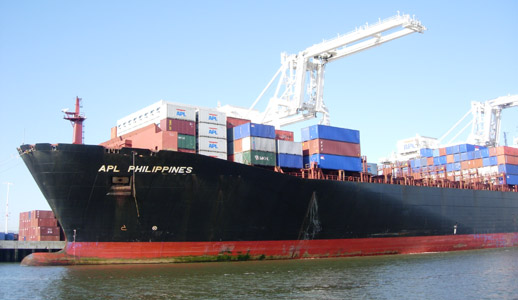Bay Area shippers are praising the new leadership at the Port of Oakland this year as the first quarter has gotten off to a promising start.

Port of Oakland Maritime Director John Driscoll
By Patrick Burnson
Published: March, 2014
Bay Area shippers are praising the new leadership at the Port of Oakland this year as the first quarter has gotten off to a promising start.
As noted in this column last summer when Chris Lytle assumed his duties as the port’s executive director, the shipping community was eager to learn what leadership moves he would make. Chief among them was his impending choice of a maritime chief capable of attracting new business.
In early January, Lytle announced the hiring of John Driscoll, a distinguished industry veteran, as the port’s director of maritime. Driscoll has more than 30 years of commercial experience in international maritime transportation, having worked for Sea-Land Service, Maersk Line and CMA CGM.
During Driscoll’s eight years with CMA CGM, the average annual increase in business volume was 14.1 percent. This time span, many will recall, included the economic downturn of 2008 and the ongoing ocean carrier capacity crisis.
The port obviously hopes Driscoll can work the same kind of magic for Oakland. While Oakland has long led the West Coast as a gateway for export cargo, it lags significantly behind several others in attracting "first call" inbound vessels. Lytle has told shippers that this will be part of his ongoing mission in the years ahead, as Oakland positions itself as a logistical hub for new enterprises moving into the Bay Area.
Given Driscoll’s noteworthy achievements for CMA CGM in the Caribbean, Central America and Latin America in the recent past, one may assume that developing more hemispheric business could also be in the offing. In any case, Oakland’s competitive position on the Pacific Rim as been greatly enhanced by this appointment.
Carriers Look to Regain Profitability in 2014
Will this be the year ocean cargo carriers finally return to profitability? Many industry analysts think so, and logistics managers are scrambling to readjust forecasts and budgets accordingly. Shippers may have to brace for higher rates as part of the turnaround.
Transpacific cargo demand posted steady growth coming off a healthy holiday season last year, and container lines serving the Asia-U.S. trade lane say the gains are so far reflected in freight rates.
A January 15 general rate increase (GRI) taken by member lines in the San Francisco-based Transpacific Stabilization Agreement (TSA) has added an average $300 per 40-foot container (FEU) to rate levels. Strong forward bookings proved that the increase would hold through the important Lunar New Year period, with carriers building on that momentum with another $300 per FEU increase effective March 15. Furthermore, shippers may expect yet another rate boost on May 1, separate from "adjustments" planned for 2014-15 contracts.
"Carriers have left a lot of money on the table in this market as partially successful increases have been eroded over time," said Brian Conrad, TSA executive administrator. "There is now a growing sense that pent-up demand, depleted retail and business inventories, and a greater overall sense of economic security are converging in 2014. Lines are determined not to miss that opportunity."
At the same time, TSA also announced its 12-month revenue and cost recovery program for 2014-15 contracts, which recommends increases to contract rates of $300 per FEU from 2013-14 levels for U.S. West Coast cargo and $400 per FEU for all other cargo. A key consideration, obviously, is the revenue baseline set as contract negotiations move forward.
"Simply rolling over last year’s contract rates—let alone reducing the rates, as some shippers have requested—is just not workable," Conrad said, reiterating that no major transpacific carrier operated profitably in the trade in 2012 or 2013. "The goal is a meaningful net increase, with full cost recovery for fuel, chassis, free time and other costs, irrespective of supply/demand or other considerations."

Transpacific cargo demand posted steady growth coming off a healthy holiday season last year. Photo by Joel Williams

